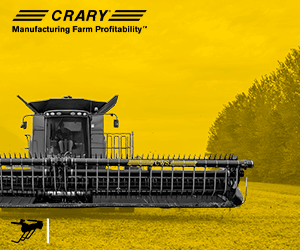Growing in Ontario
FROM THE CEO'S DESK

ONTARIO AGRICULTURE IS unique — we’re not Western Canada. That might seem like an obvious statement to an Ontario farmer, but it’s a message worth delivering, and repeating, to those seeking election in this month’s federal election. There can be no one-size fits all cookie cutter approach to agriculture across the country, but that can be difficult for policy makers to understand.
The most obvious difference between Ontario and the West is the size of our farming operations. However, just because we run smaller operations, does not mean our contribution to the provincial and national economies is smaller. Our agronomic and environmental best management practices have allowed us to produce more on less land and our efficiencies pay off with comparatively higher revenue per acre. Ontario is the largest grower of grain corn and soybeans in the country and, in addition to our strong exports, all of our crops support value-added production within our borders. More than 50 per cent of our corn is used in ethanol production, more than 80 per cent of our wheat is milled within the province, soybeans are crushed locally for food and feed use, and barley and oats also support the livestock industry. This broader economic activity is in stark contrast to the West where the majority of grain is exported.
For nearly a decade, the western grain industry has received a significant amount of political attention which has been fueled by coverage within mainstream media. A prime example of this is the rail shortage in Western Canada that made headlines in late 2013. Ever since, ‘How is the rail situation’ has been the first question I typically get asked by federal politicians. While it was a significant problem for western farmers, they don’t understand it wasn’t an issue that affected us here in Ontario. Rail lines are certainly utilized in Ontario, but they play a minor role in the overall movement of grains which relies heavily on the shipping industry within the Great Lakes and St. Lawrence Seaway system.
It’s important to educate our elected officials on regional differences such as this, and help them understand that free-trade agreements, investment in research, and equitable access to new technologies will play a larger role in the future success of the grain industry here in Ontario. These issues may be different than the priorities of the west, but the affect they have on our farmers isn’t any less important. It’s time our elected officials realize this and pay attention to the needs of all farmers.
When I say all farmers, I also include those in other eastern provinces making their own important contributions to Canada’s agriculture sector that get overlooked. Mark Brock, chair of Grain Farmers of Ontario, and I recently visited Prince Edward Island. Their expanding soybean acres are helping to diversify the agriculture industry on the island known for its potatoes and blueberries. However, they face their own challenges surrounding international market competition, consumer expectations, and farm income stability and profitability. All of these issues are affected by policy decisions at the national level.
In an effort to speak with a louder voice, we have partnered with the Atlantic Grains Council and les Producteurs de grains du Québec on several initiatives, including a reception on parliament hill that was designed to bring attention to the significant contribution eastern grain production provides to the national economy and the issues we face that make us unique from Western Canada.
As the election nears, I encourage you to make sure your local candidates know how important it is to recognize different regional needs within agriculture. In a global economy we need sound policy that allows farmers in all provinces to take advantage of their strengths and supports them in areas of need.
You can access more information about the federal policy issues important to Ontario’s grain industry on our website at www.gfo.ca. •








